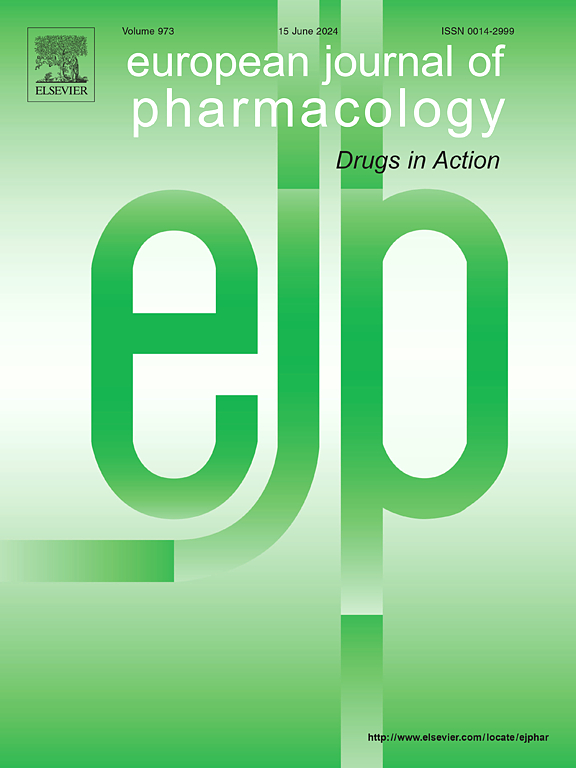谵妄风险与艾氯胺酮、七氟醚、异丙酚和右美托咪定相关:基于FDA不良事件报告系统的真实世界研究
IF 4.2
3区 医学
Q1 PHARMACOLOGY & PHARMACY
引用次数: 0
摘要
目的:谵妄是一种严重的术后并发症,随着镇静药物的使用,其危险性越来越高。本研究旨在评估艾氯胺酮、七氟醚、异丙酚和右美托咪定与谵妄风险的关系。方法:数据来自FDA不良事件报告系统(FAERS)数据库,涵盖2004年第一季度至2024年第二季度。与这些药物相关的谵妄病例使用《调节活动医学词典》(MedDRA 20.0)定义的首选术语(PTs)进行鉴定。歧化分析采用报告的比值比(ROR)和多重γ -泊松收缩(MGPS),而逻辑回归评估年龄和性别对谵妄风险的影响。结果:FAERS数据库共记录了21,433,114例不良事件(ae),其中埃氯胺酮相关谵妄16例,异丙酚相关谵妄189例,七氟醚相关谵妄90例,右美托咪定相关谵妄103例。异丙酚(ROR: 5.44, EBGM05: 4.8)、七氟醚(ROR: 9.9, EBGM05: 8.26)和右美托咪定(ROR: 21.1, EBGM05: 17.67)与谵妄风险显著相关,而艾氯胺酮(ROR: 1.45, EBGM05: 0.96)与谵妄风险无显著相关性。年龄被认为是谵妄的重要危险因素,尤其是55岁及以上的患者。结论:研究结果表明异丙酚、七氟醚和右美托咪定与谵妄风险有显著相关性,而艾氯胺酮与谵妄风险无显著相关性。未来的研究应进一步探讨药物给药和剂量对谵妄风险的影响,以提高临床安全性。本文章由计算机程序翻译,如有差异,请以英文原文为准。
Delirium risk associated with esketamine, sevoflurane, propofol, and dexmedetomidine: A real-world study based on the FDA adverse event reporting system
Objective
Delirium is a serious postoperative complication, increasingly recognized for its heightened risk following the use of sedative drugs. This study aimed to assess the relationship of esketamine, sevoflurane, propofol, and dexmedetomidine with the risk of delirium.
Methods
Data were obtained from the FDA Adverse Event Reporting System (FAERS) database covering the period from the first quarter of 2004 to the second quarter of 2024. Cases of delirium associated with these medications were identified using preferred terms (PTs) defined by the Medical Dictionary for Regulatory Activities (MedDRA 20.0). Disproportionality analyses employed reported odds ratios (ROR) and multiple gamma-Poisson shrinkage (MGPS), while logistic regression assessed the effects of age and sex on the risk of delirium.
Results
A total of 21,433,114 adverse events (AEs) were recorded in the FAERS database, including 16 cases of delirium associated with esketamine, 189 with propofol, 90 with sevoflurane, and 103 with dexmedetomidine. Propofol (ROR: 5.44, EBGM05: 4.8), sevoflurane (ROR: 9.9, EBGM05: 8.26), and dexmedetomidine (ROR: 21.1, EBGM05: 17.67) were significantly associated with the delirium risk, whereas esketamine (ROR: 1.45, EBGM05: 0.96) did not show a significant association. Age was identified as a significant risk factor for delirium, particularly in patients aged 55 years and older.
Conclusion
The findings indicate a significant correlation between propofol, sevoflurane, and dexmedetomidine and the risk of delirium, whereas esketamine does not appear to have a significant association with delirium. Future studies should further explore drug administration and dosage effects on delirium risk to improve clinical safety.
求助全文
通过发布文献求助,成功后即可免费获取论文全文。
去求助
来源期刊
CiteScore
9.00
自引率
0.00%
发文量
572
审稿时长
34 days
期刊介绍:
The European Journal of Pharmacology publishes research papers covering all aspects of experimental pharmacology with focus on the mechanism of action of structurally identified compounds affecting biological systems.
The scope includes:
Behavioural pharmacology
Neuropharmacology and analgesia
Cardiovascular pharmacology
Pulmonary, gastrointestinal and urogenital pharmacology
Endocrine pharmacology
Immunopharmacology and inflammation
Molecular and cellular pharmacology
Regenerative pharmacology
Biologicals and biotherapeutics
Translational pharmacology
Nutriceutical pharmacology.

 求助内容:
求助内容: 应助结果提醒方式:
应助结果提醒方式:


